Current Main Projects
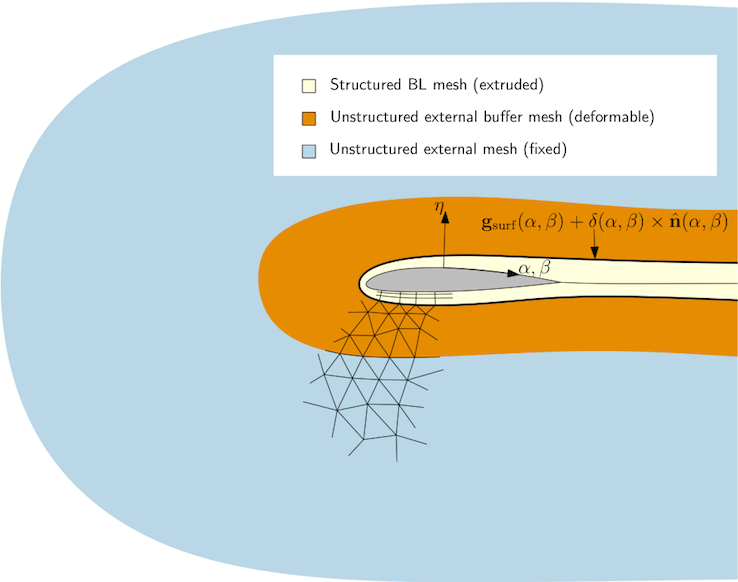
Boundary Layer Adaptivity
The goal of this project is to explore new adaptation strategies for boundary layer flows in which the viscous mesh is computed on the fly as part of the solution rather than using an a-posteriori adaptation framework. This approach allows us to leverage the fast convergence of high order methods and relieve some of their inherent stiffness for under-resolved meshes. In addition, the solver is designed so that boundary layer profiles are easy to extract and can be used to drive a transition prediction module. This solver was inspired by the VGNS solver and uses much of its technology for the boundary layer thickness growth.
- D. Moro, N.C. Nguyen, M. Drela and J. Peraire, A Reynolds-Averaged Navier-Stokes solver with transition prediction capability, in 11th World Congress on Computational mechanics, Barcelona, Spain, July 2014.

- D. Moro, An adaptive high order Reynolds-averaged Navier-Stokes solver with transition prediction,
PhD thesis, MIT, December 2014.


Transition prediction using high order methods
The particular features of our adaptive solver, namely, the simple extraction of boundary layer profiles and the good quality of these, allows us to predict transition by means of an eN method. For this, a high order surface PDE solver has been proposed that takes care of propagating the amplification factor along the surface, which dictates the regions in the boundary layer where turbulent production is allowed.
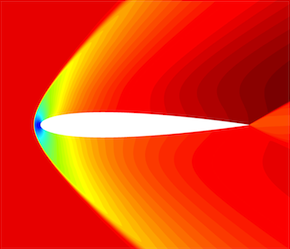
Shock Capturing for high order methods
In this project, we focus on the design of an artificial viscosity scheme for high order implicit solvers. The proposed strategy is based on a point-wise sensor that is a function of the solution and its gradients, properly scaled to attain grid convergence. We have applied this scheme to a variety of 1D and 2D flows using high order polynomials on unstructured anisotropic meshes with reasonable success.
Previous projects
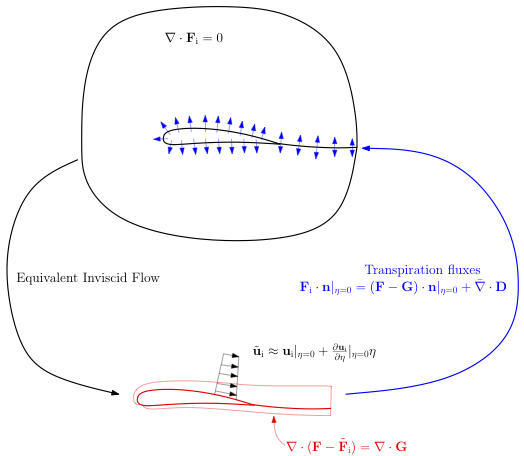
Virtual Grid Navier-Stokes
In this project, we explored new adaptation strategies for boundary layer flows in which the viscous mesh was computed as part of the solution using a suitable surface PDE for the thickness of the boundary layer. To simplify the coupling with the inviscid region, a Viscous-Inviscid Interaction technique was used. The system of equations was then solved in a monolithic fashion to avoid problems like the well known singularity at flow separation.
- D. Moro, N.C. Nguyen, M. Drela and J. Peraire, A High-Order Self-Adaptive Monolithic Solver for Viscous-Inviscid Interacting Flows (AIAA Paper 2013-857), in Proc. of the 51st AIAA Aerospace Sciences Meeting, Grapevine TX, January 2013.



- D. Moro, N.C. Nguyen, M. Drela and J. Peraire, Advances in the Development of a High Order, Viscous- Inviscid Interaction Solver, in Proc. of the 21st AIAA Computational Fluid Dynamics Conference, San Diego CA, June 2013, AIAA Paper 2013-2943.




Regularized Spalart-Allmaras model
Solving the Spalart-Allmaras (SA) model using high order methods is not a trivial task. In particular, the oscillations that can appear at the edge of the boundary layer and the wake due to under-resolution can prevent the convergence to a solution. In this project, we proposed a modified SA model suitable for high order methods. It is based on an entropic regularization function as a smooth surrogate for a hard clipping so that unphysical eddy viscosity states do not affect the different terms in the governing PDE. The proposed modification was tested on a variety of flows and allowed us to compute solutions on very coarse meshes, which is important during the initial stage of any adaptivity strategy.
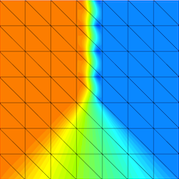
Hybridized Discontinuous Petrov-Galerkin
The focus of this project was to extend the framework of the Discontinuous Petrov-Galerkin scheme (DPG, Demkowicz and Gopalakrishnan , '09) to nonlinear conservation laws, trying to address some of its shortcomings like the extended stencil or the lack of local conservation. For this, we derived a nonlinear version of DPG consisting of a constrained optimization problem, that we applied to the local problem in the Hybridizable DG setting. The resulting scheme, that we dubbed Hybridized Discontinuous Petrov-Galerkin (HDPG), was able to retain the sparsity pattern of HDG and the augmented stability of DPG.
- D. Moro, N.C. Nguyen, Peraire J.,
HDPG: A Hybrid Discontinuous Petrov-Galerkin Method for Scalar Conservation Laws, in
16th International Conference on Finite Elements in Flow Problems (FEF 2011), Munich, Germany, March 2011.

- D. Moro, A Hybridized Discontinuous Petrov-Galerkin scheme for compressible flows,
MSc thesis, MIT, June 2011.


- D. Moro, N.C. Nguyen, Peraire J.,
A hybridized discontinuous Petrov-Galerkin scheme for scalar conservation laws,
International Journal for Numerical Methods in Engineering, 91(9):950-970 (2012).


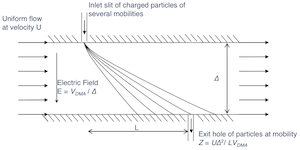
DMA-MS
During my stay at SEADM, I took part on a project whose goal was to couple SEADM's patented Differential Mobility Analyzer (DMA) with a mass spectrometer (MS). The combined instrument was capable of measuring both mobility (related to size and shape) and mass of an ion in an independent way, hence dubbed an orthogonal filter. Amongst other tasks, I worked on the design and test of the inlets and outlets of the instrument, which are critical to attain high resolution with high ion transmission.
- J. Rus, D. Moro, J.A. Sillero, J. Fernández de la Mora, New planar DMA designs for high transmission and resolution coupling to modern API-MS instruments, in
II Spanish Conference on Aerosol Science and Technology (RECTA), Malaga, Spain, June 2008.

- J. Rus, D. Moro, J.A. Sillero, J. Royuela, A. Casado, F. Estévez-Molinero, J. Fernández de la Mora,
IMS-MS Studies Based on Coupling a Differential Mobility Analyzer (DMA) to Commercial API-MS Systems,
International Journal of Mass Spectrometry, 298:30-40 (2010).

